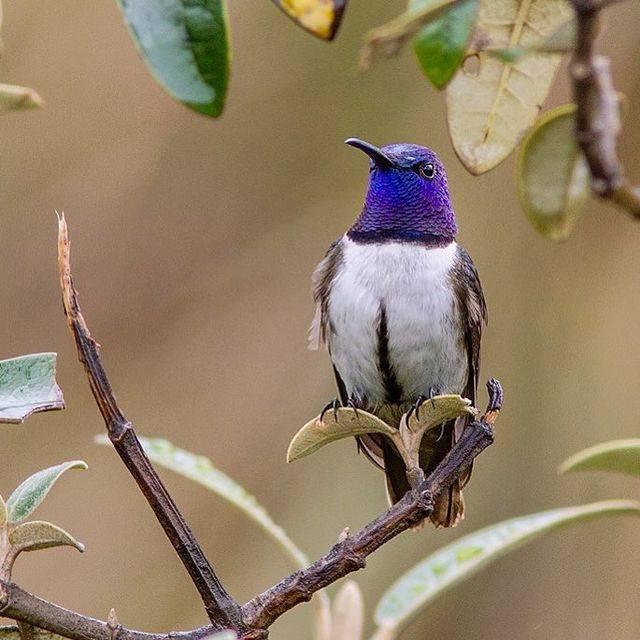

He has a striking glittering violet-purple hood that stands out that much more against his white under plumage separated by a black beck band!

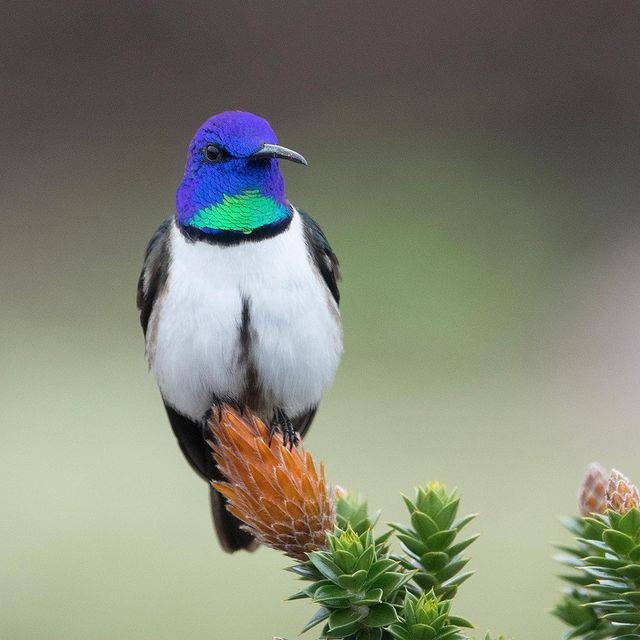
The Ecuadorian hillstar (Oreotrochilus chimborazo), is a species of hummingbird quite unlike any other hummingbirds. Big for a hummingbird, this species is about 12 cm, weighing in at approximately 8.
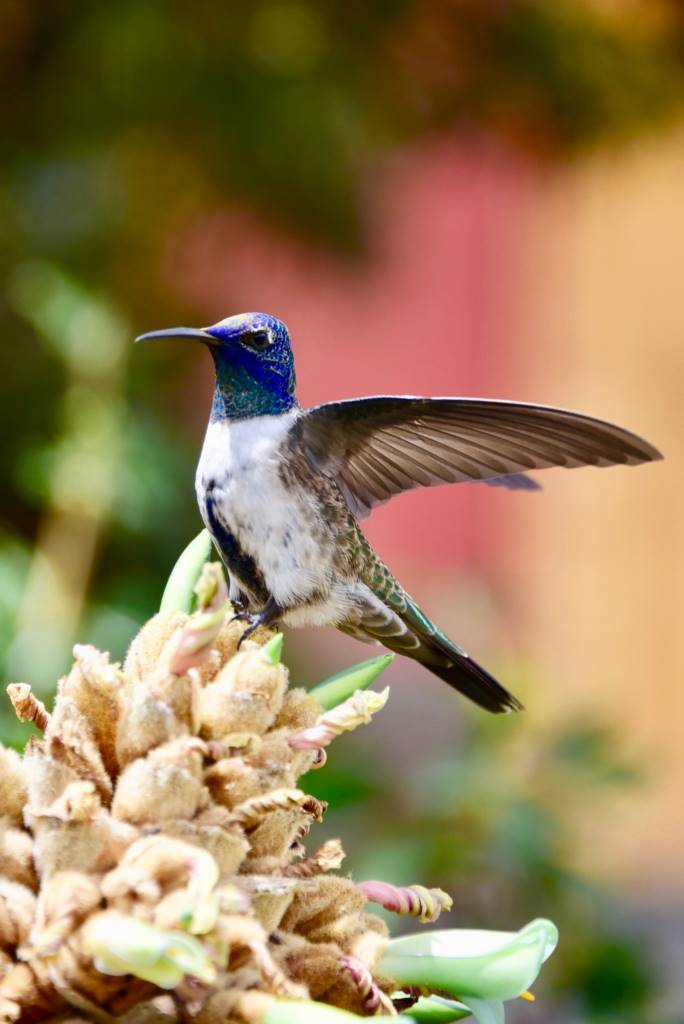

Females are more of a dusty olive-green above with a whitish throat speckled with brown spots.
Her tail is dark and the rest of her underparts are pale grayish.
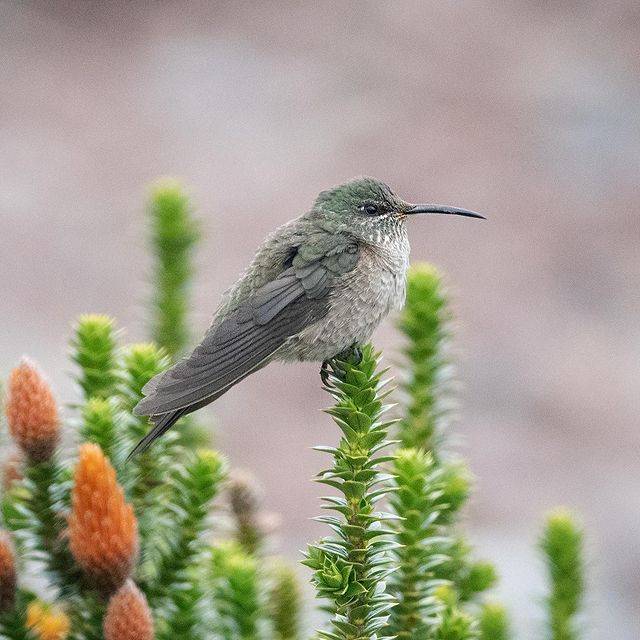

The Ecuadorian hillstar is endemic to the Andes of Ecuador and far southern Columbia at altitudes of 11,500 to 17,100 feet. They inhabit grassland, scrub, and stunted woodland areas where they feed primarily feed on nectar, especially from the orange-flowered Chuquiragua shrub. They also eat some small insects and spiders.
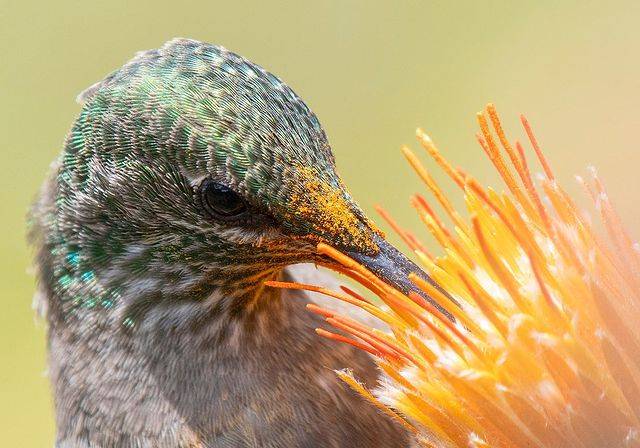
During the breeding season, which is pretty much all your round, a cup-shaped nest is built by the female out of plant fibers woven together and green moss. It is usually built in a bush, shrub, or small tree. She lines it with soft plant fibers, animal air, and feather-down. She lays one white egg within, then feeds her chicks regurgitated insects once they have hatched. After about 20 days the chicks are fully-fledged.
This species is regarded as of Least Concern on the ICUN list, as it is fairly common, even though it has a fairly restricted, rather patchy breeding range.
